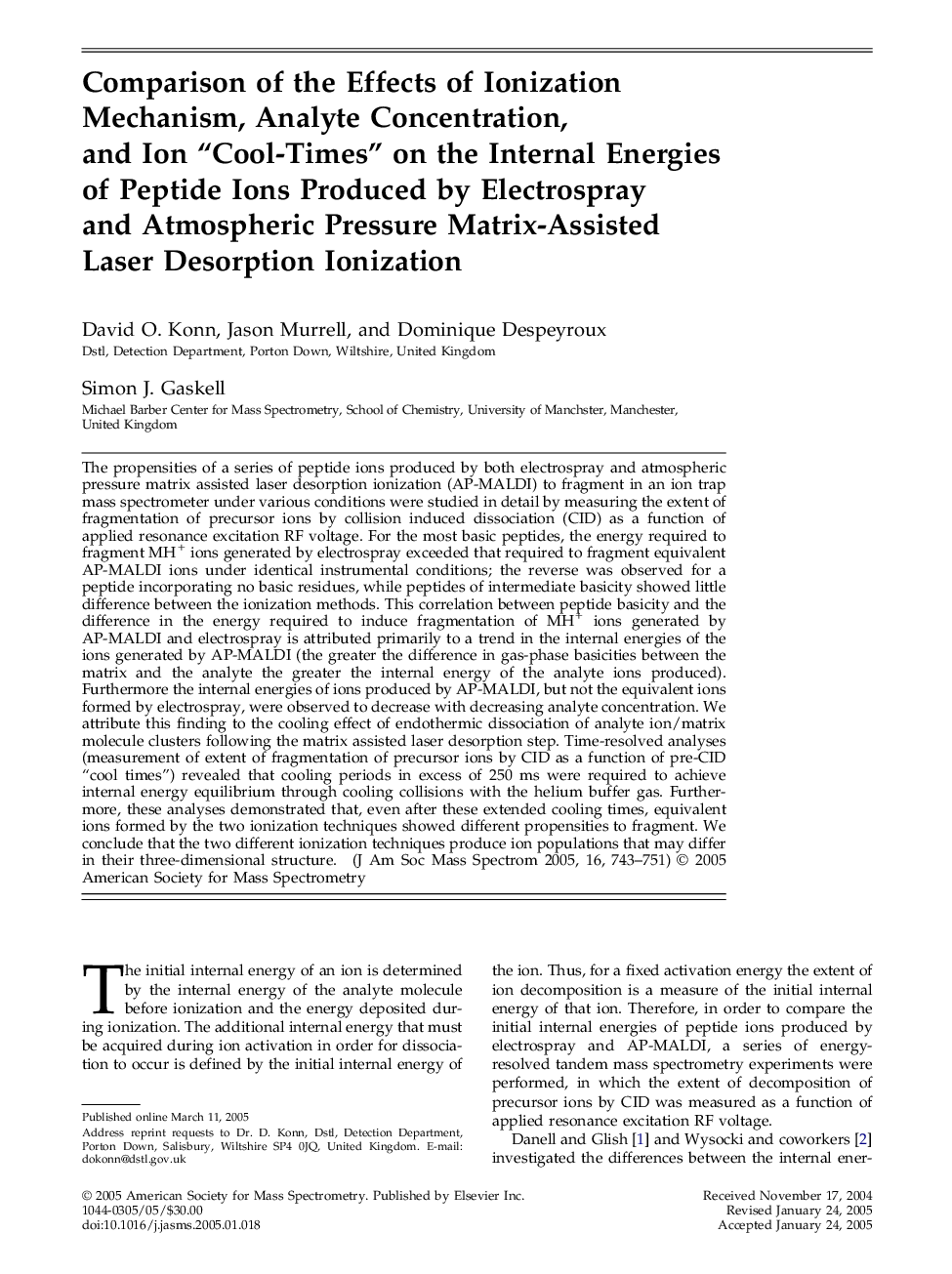| کد مقاله | کد نشریه | سال انتشار | مقاله انگلیسی | نسخه تمام متن |
|---|---|---|---|---|
| 10546599 | 964420 | 2005 | 9 صفحه PDF | دانلود رایگان |
عنوان انگلیسی مقاله ISI
Comparison of the Effects of Ionization Mechanism, Analyte Concentration, and Ion “Cool-Times” on the Internal Energies of Peptide Ions Produced by Electrospray and Atmospheric Pressure Matrix-Assisted Laser Desorption Ionization
دانلود مقاله + سفارش ترجمه
دانلود مقاله ISI انگلیسی
رایگان برای ایرانیان
موضوعات مرتبط
مهندسی و علوم پایه
شیمی
شیمی آنالیزی یا شیمی تجزیه
پیش نمایش صفحه اول مقاله

چکیده انگلیسی
The propensities of a series of peptide ions produced by both electrospray and atmospheric pressure matrix assisted laser desorption ionization (AP-MALDI) to fragment in an ion trap mass spectrometer under various conditions were studied in detail by measuring the extent of fragmentation of precursor ions by collision induced dissociation (CID) as a function of applied resonance excitation RF voltage. For the most basic peptides, the energy required to fragment MH+ ions generated by electrospray exceeded that required to fragment equivalent AP-MALDI ions under identical instrumental conditions; the reverse was observed for a peptide incorporating no basic residues, while peptides of intermediate basicity showed little difference between the ionization methods. This correlation between peptide basicity and the difference in the energy required to induce fragmentation of MH+ ions generated by AP-MALDI and electrospray is attributed primarily to a trend in the internal energies of the ions generated by AP-MALDI (the greater the difference in gas-phase basicities between the matrix and the analyte the greater the internal energy of the analyte ions produced). Furthermore the internal energies of ions produced by AP-MALDI, but not the equivalent ions formed by electrospray, were observed to decrease with decreasing analyte concentration. We attribute this finding to the cooling effect of endothermic dissociation of analyte ion/matrix molecule clusters following the matrix assisted laser desorption step. Time-resolved analyses (measurement of extent of fragmentation of precursor ions by CID as a function of pre-CID “cool times”) revealed that cooling periods in excess of 250 ms were required to achieve internal energy equilibrium through cooling collisions with the helium buffer gas. Furthermore, these analyses demonstrated that, even after these extended cooling times, equivalent ions formed by the two ionization techniques showed different propensities to fragment. We conclude that the two different ionization techniques produce ion populations that may differ in their three-dimensional structure.
ناشر
Database: Elsevier - ScienceDirect (ساینس دایرکت)
Journal: Journal of the American Society for Mass Spectrometry - Volume 16, Issue 5, May 2005, Pages 743-751
Journal: Journal of the American Society for Mass Spectrometry - Volume 16, Issue 5, May 2005, Pages 743-751
نویسندگان
David O. Konn, Jason Murrell, Dominique Despeyroux, Simon J. Gaskell,